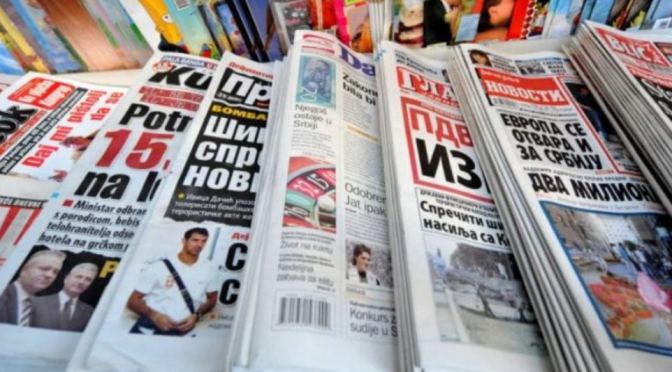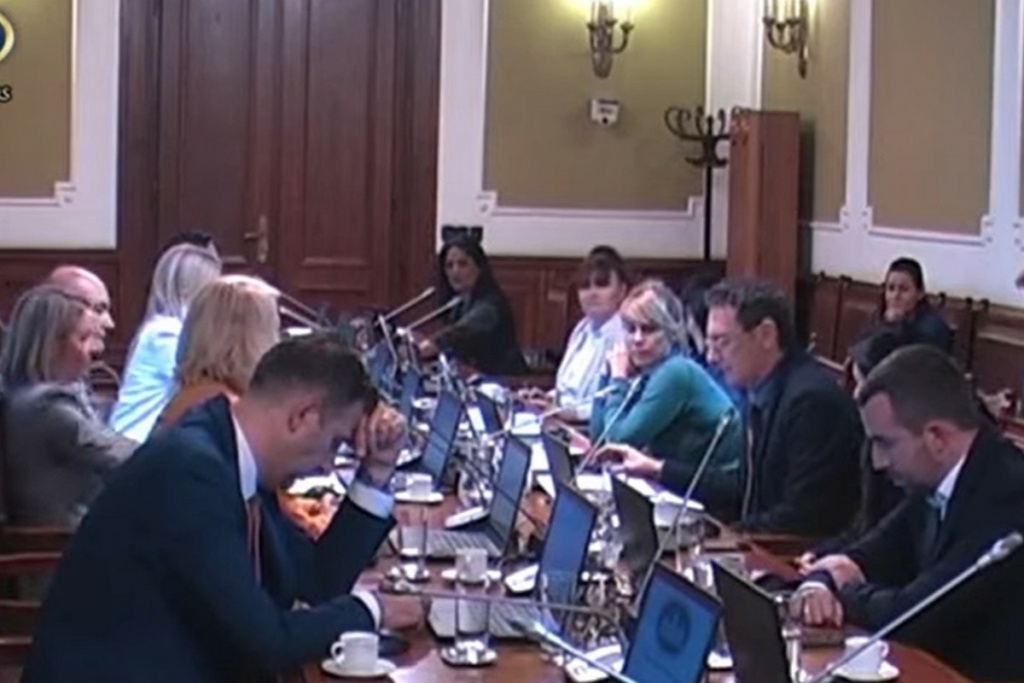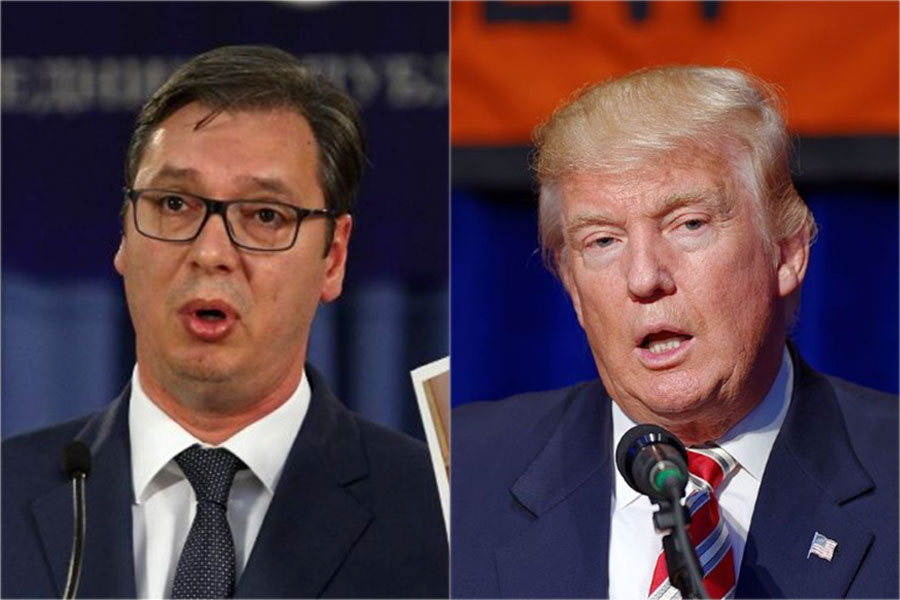 A type of modern censorship does exist in Serbia and is exhibited in the smothering of media pluralism and free exchange of different ideas and opinions in the public sphere and as a result all of society suffers
A type of modern censorship does exist in Serbia and is exhibited in the smothering of media pluralism and free exchange of different ideas and opinions in the public sphere and as a result all of society suffers
When censorship exists it is also talked about. This is true in the case of 17th century England, when censorship was imposed by Parliament, and it is also true in the case of countries that call themselves democracies, or which aspire to be democracies.
During the English Civil War Parliament passed the Licensing Order of 1643. According to the Order, a team of official censors controlled, i.e. prohibited or approved, works before they went to print. It is in this atmosphere that the debate on the freedom of the press was ignited and only a year later John Milton spoke out against censorship in his famous work Areopagitica. Although censorship in Britain was abolished only in 1695 the polemical tract by Milton had great impact and is today considered as one of the best defenses of freedom of the press.
Anyone can ask why television programs that fostered debate, programs that were well-known for the exchange of different ideas and opinions, for critical views – started disappearing after the last elections. Or why the dangerous tabloidized spirit has spread so easily from print to electronic media?
In addition to rule of majority and rule of law modern democracies also entail human rights and liberties; which include freedom of thought, speech and expression. In this sense the existence of the censorship from Milton’s era in present-day democratic societies represents a contradictio in adjecto, which is why confusion exists over whether there can be any mention of censorship in states that call themselves democratic. Censorship which is imposed by the state or the monarch by decree is not practiced in modern society, and if a government were to take such steps today, it would forfeit the democratic status of the country. The fundamental difference between censorship in the past and today is that if it currently appears in democratic societies, is concealed and partial, i.e. it does not exist as an official general prohibition, with the exception wartime or a state of emergency. And everything that is concealed is also difficult to prove. Neither will the censor (embodied in the owner or editor of the media outlet, a representative of an interest group, or authority) report themselves, nor will the censored party be keen to admit that they agreed to be censored (because they would as a result suffer consequences similar to the ones they tried to avoid through agreeing to the censorship). This is why the debate on whether there is censorship in Serbia has hit a dead end.
In the camp that supports the position that no censorship exists, the argument that stands out by its wit rather than its soundness, was put forward by a Government official and claims that the proof that there is no censorship – is the fact that it is being talked about. However, even the example used at the beginning of this article from 17th century Britain shows that censorship can indeed be discussed, even at times when official censorship is in full swing.
Even though the judiciary had collapsed, it was only at the end of the strike that information emerged, without any analyses, arguments or confrontations. The case of the Belgrade Waterfront project was similar as months passed before expert opinions started emerging in public and challenging the validity of the project. The educators are in a similar situation and the students are suffering the most because of their strike. But no one is talking about this.
The accelerated development of technology has additionally thwarted censorship in the form in which it existed at a time when only books and newspapers were printed. In the digitalized 21st century the censorship from John Milton’s era is practically impossible. One can hardly imagine that it would be possible to establish control over all printed and audiovisual media and Internet content.
Due to the altered social, economic and technological circumstances, the censorship which is practiced in the modern era essentially differs in its modalities from those carried out in earlier historic epochs. As a result, the modern era requires a modern, adapted definition of censorship.
Instead of exhausting ourselves with attempts to prove that which is concealed, i.e. the existence of pressures and impermissible influences on the media in Serbia let us focus on what is visible: the content of the media themselves. Let us take a look at the standard for “media pluralism”; more specifically its internal aspect. Contrary to the external aspect which looks at media ownership, the internal aspect is related to the diversity of the information and opinions that are available to the citizens. Abiding by this standard prevents the dominant impact of any center of power on the public sphere.
In previous decades achieving the standard for media pluralism, along with freedom of expression, has become a focal point in European media legislation. Insisting on the honoring of this standard is present in all umbrella documents, including the 1982 Council of Europe Declaration on Freedom of Expression and Information, the 2000 Charter of Fundamental Rights of the European Union, which places pluralism of the media in the focus of regulations. Article 11, paragraph 2 of this document states “The freedom and pluralism of the media shall be respected.” The same goes for the renowned 2007 Audiovisual Media Services Directive (AVMSD), which also states that “pluralism of information should be a fundamental principle of the Union.” (Introduction, paragraph 34). In 2007 the Council of Europe even passed a special “Recommendation on Media Pluralism and Diversity of Media Content”, which among other things warns that “pluralism of information and diversity of media content will not be automatically guaranteed by the multiplication of the means of communication” and that “the transnational media concentration phenomena can have a negative impact on diversity of content.”
So, does media pluralism exist in Serbia?
It is not difficult to answer this question and anyone can answer it. Anyone can take a pen and paper and write down how many times the same political figure or the same political option appears in a news program, how many shows exist that confront different opinions on topics that are important in the daily lives of the citizens, how often one can hear criticism of the government. Anyone can ask why television programs that fostered debate, programs that were well-known for the exchange of different ideas and opinions, for critical views – started disappearing after the last elections. Or why the dangerous tabloidized spirit has spread so easily from print to electronic media?
To make things worse, the public debate is lacking not only in the media but also in the overall public sphere of Serbia. It is also not being properly carried out at the level of the state authorities and institutions; which are required to hold public discussions. Even the National Assembly itself is suffering from a lack of a public discussion as it is often smothered by passing legislation according to urgent procedure.
We would like to remind those who are prone to disagree with the claim that pluralism of the media and thought in Serbia is seriously threatened of the most obvious examples, such as the months-long strikes of attorneys and teachers, and the Belgrade Waterfront project. Even though the judiciary had collapsed, it was only at the end of the strike that information emerged, without any analyses, arguments or confrontations. The case of the Belgrade Waterfront project was similar as months passed before expert opinions started emerging in public and challenging the validity of the project. The educators are in a similar situation and the students are suffering the most because of their strike. But no one is talking about this or numerous other topics that are of vital importance in the lives of Serbian citizens.
The pluralism of thought and information that is advocated by the EU is at a disturbingly low level in Serbia, which is an EU candidate country. Although Serbia’s society from the 1990s differed significantly both politically and technologically from today, one would not be wrong to draw parallels between these two periods in the context of media freedoms. In the early 1990s diverse opinions could be heard on a small number of independent media, including Belgrade-based NTV Studio B – the only independent television station at the time, and this role has today been taken over by social networks. However, much like NTV Studio B could not hamper the heavy propaganda artillery of the state-owned television and press due to its local nature; today social networks cannot make up for the need to hear different opinions in a much broader public space. Nevertheless, the fact that the authorities also fear the exchange of information in the virtual public space was apparent in May 2014, when during the huge floods people were questioned by the authorities in connection with what they had written on social networks, and criminal charges were filed against nine individuals.
Media pluralism and freedom of expression and information are directly dependent on each other: if there is no media pluralism there can be no mention of respecting of the right of freedom of expression and information and vice versa. Both of these standards are called into question in Serbia while respecting them is a prerequisite for information in the best public interest, without which there is no active civic participation and genuine democracy.
Consequently, a type of modern censorship does exist in Serbia and is exhibited in the smothering of media pluralism and free exchange of different ideas and opinions in the public sphere and as a result all of society suffers.



 Medijski amandmani umiru u skupštinskom mraku: Noćno zasedanje Odbora, u četiri čina
Medijski amandmani umiru u skupštinskom mraku: Noćno zasedanje Odbora, u četiri čina Filmovi o novinarima i za novinare
Filmovi o novinarima i za novinare Vučić i Tramp: Netrpeljivost prema medijima i podrugljivo odbacivanje drugačijeg mišljenja
Vučić i Tramp: Netrpeljivost prema medijima i podrugljivo odbacivanje drugačijeg mišljenja
Ostavljanje komentara je privremeno obustavljeno iz tehničkih razloga. Hvala na razumevanju.